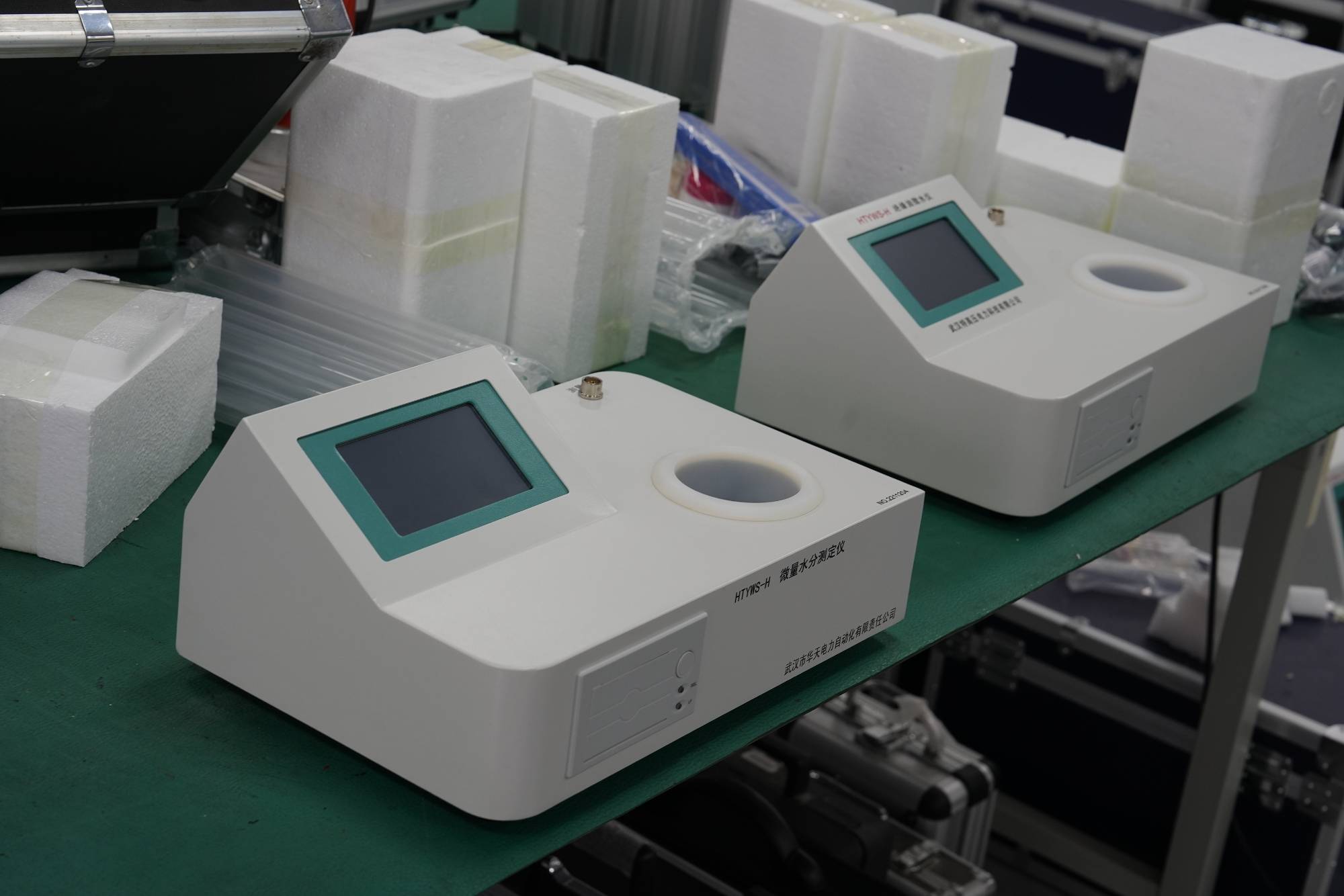The trace moisture analyzer under UHV power can help many power workers conduct various power tests more conveniently.

There are many things to pay attention to when operating a Karl Fischer moisture analyzer. And especially its operating procedures must be strictly followed in order to achieve the accuracy and goals of the experiment. What are the procedures for operating the Karl Fischer moisture analyzer?
1. Addition of titrant
Install the inlet tube, molecular sieve drying tube, and specialized bottle cap onto the reagent bottle to connect the equipment. Press the "Clean" button on the keyboard to enter the number of times and volume. Press the "Start" button to start cleaning the burette, filling the entire inlet and outlet tubes with reagents. It is recommended to cycle the burette repeatedly before starting the experiment every day to maintain consistent concentration in the reagent bottle and titration tube (usually set to 10ml three times, the number of times and volume can be reduced appropriately).
2. Addition of solvent (anhydrous methanol)
Install the solvent tube, molecular sieve drying tube, and specialized bottle cap onto the anhydrous methanol reagent bottle. Add 20-50ml of anhydrous methanol to the titration tank through an automatic dropper, ensuring at least immersion of the electrode and outlet pipe. The amount of methanol added depends on the size of the titration cell and also on the size of the sample being measured; After adding methanol, the titration cell should be immediately closed tightly in order to minimize the amount of atmospheric moisture that cannot be avoided entering the titration cell. Meanwhile, please start stirring.
3. Pre titration
Press the "Method" button, select "Method 1- Moisture Pre titration", confirm and press the "Start" button to start the pre titration program. After the measurement is complete, press the "Confirm" button to return to the system hold state for other programs.
The use of reagents to titrate the solvent added to the titration cell to a dry state is very important because pre titration can not only eliminate the moisture in the solvent, but also remove the moisture adsorbed in the titration cell, on the wall, and on the electrode. At the same time, the gas liquid in the titration cell has been dried, and titration to a stable endpoint is a prerequisite for reliable analysis. Therefore, when pre dripping, it is necessary to consume as much time as possible. The drift value of an almost completely dry titration cell is generally around 10ml/min.
4. Drift
Press the "Method" button, select "Method 2- Moisture Drift", confirm and press the "Start" button to start the drift program. After the measurement is completed, press the "Confirm" button to save the drift value and return to the system hold state for other programs.
The instrument automatically measures the drift value within 4 minutes to indicate the dryness of the equipment and reflect the impact of the external environment on the test. This value will be deducted as background in calibration and sample calculation, expressed in ml/min. The drift value of the titration cell refilled with fresh reagent should not exceed 30ml/min, which is the number of milliliters of reagent consumed per minute. The most ideal is to reach below 10ml/min.
5. Calibration
Press the "Method" button, select "Method 3- Moisture Calibration", confirm and select "1 Measurement". After confirming again, select the standard sample, enter the amount of the standard sample, and press the "Start" button to start the calibration program. After the measurement is completed, press the "Confirm" button to save and print the calibration results. Return to the system hold state for other programs. Repeat this operation for multiple calibrations.
The measurement of reagent titration is a necessary task in experiments. Especially when the titration degree of a standard solution changes or may change due to certain factors such as the infiltration of moisture from the atmosphere or changes in environmental temperature, it becomes even more necessary and important. The frequency of reagent calibration mainly depends on the selection of titration reagents, and the stability of different reagents varies. In addition, the storage of titrants is not absolutely sealed, so it is recommended to calibrate them before titration every day.
6. Titration of sample moisture content
Press the "Method" button, select "Method 4- Sample Moisture", confirm, and enter the relevant information of the sample. After confirming again, press the "Start" button to start the sample moisture measurement program. After the measurement is completed, press the "Confirm" button to save and print the results. Return to the system hold state for other programs. Repeat this operation for multiple measurements.
7. Processing after the end of the experiment
After the experiment is completed, please press the "Exit" button to return to the initial state for cleaning work.



















